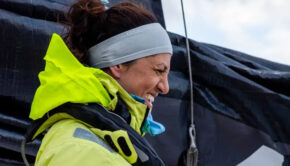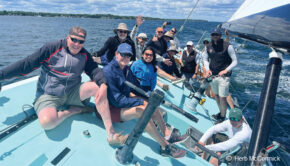750 coldwater miles to Alaska
Published on September 30th, 2014
The inside passage to Alaska has been paddled by native canoes for millennia, sailing craft for centuries, and after someone found gold in the Klondike the route was jammed with steamboats full of prospectors elbowing each other out of the way for the promise of fortune.
In the spirit of tradition, exploration, and the lawless self-reliance of the gold rush, the Race to Alaska has been born. As the inaugural event in 2015, R2AK is the first of its kind and North America’s longest human and wind powered race, and currently the largest cash prize.
It’s like the Iditarod, on a boat, with a chance of drowning, being run down by a freighter, or eaten by a grizzly bear. There are squalls, killer whales, tidal currents that run upwards of 20 miles an hour, and some of the most beautiful scenery on god’s green earth.
R2AK is based on the hardest kind of simplicity. Just you, a boat, a starting gun, and $10,000 if you finish first, a set of steak knives if you’re second, and Cathartic elation if you can simply complete the course. This is a self-supported race with no supply drops and no safety net. Any boat without an engine can enter.
The race has two stages…
Stage 1: Port Townsend, WA to Victoria, BC (40 miles)
R2AK starts in Port Townsend on June 4 with an initial race across open water, two sets of shipping lanes, and an international border. The first stage is designed as a qualifier for the full race and as a stand-alone 40 mile sprint for people who just want to put their toe in. For those that want to be a part of R2AK but don’t have the time or inclination for the full race, they can join for a full day of all out racing across some of the biggest water in the course. Racers continuing on will clear Canadian customs in Victoria. Stage one winners get to bask in the glory for a full day and a half.
Stage 2: Victoria, BC to Ketchikan, AK (710 miles)
Racers start in Victoria on June 6 and continue until they reach Ketchikan or are tapped out by the sweep boat. Other than two waypoints at Seymour Narrows and Bella Bella, there is no official course. To quote the bard: You can go your own way.
The start date was intentionally picked because the winds are of unpredictable strength and duration, fueling debate on whether the optimal boat will favor sail, oars, or paddles. The race length is estimated to be around three weeks.
Event website: http://racetoalaska.com









 We’ll keep your information safe.
We’ll keep your information safe.